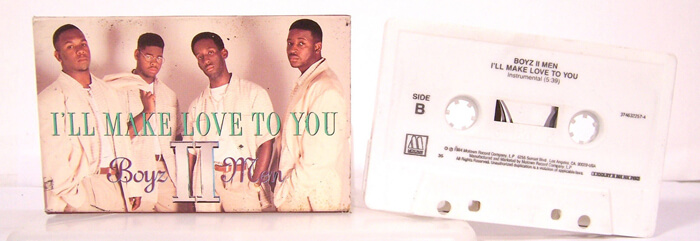Sex Tape, The Purge: Anarchy, and On-screen Fantasy Life
Sex Tape may, on its face, look like a fairly generic studio comedy romp, but it actually gathers together a variety of similar but distinct comic styles—until, in fact, its arms seem more than full. With a co-writing credit from star Jason Segel and his frequent collaborator Nicholas Stoller, it could be seen as the third chapter in the Segel/Stoller Relationships Today series: they covered dating and heartbreak in Forgetting Sarah Marshall, the run-up to commitment in The Five-Year Engagement, and now Sex Tape finds Segel, for the first time, married with children on screen. In the rich tradition of this series pairing him opposite the superhumanly charming Mila Kunis and Emily Blunt, he’s married to Cameron Diaz, but at least she’s a commendable eight years his senior—and Segel seems to be in the best shape of his life just to keep up. Not that there’s much to keep up with for their characters: the movie opens with Diaz’s mom-blogger writing a post about the difficulty of keeping a sexual spark alive with so many looming responsibilities and obligations (in other words: childen).
After a surprising amount of rumination on this topic, Diaz and Segel land on a temporary solution: while the kids are out at a sleepover, they’ll make their own porno, trying out every position in The Joy of Sex. Naturally, in an absurd twist the screenplay does its best to justify, their video gets uploaded—synced, via an advanced app, to all of the various iPads Segel (a radio station program director, or something; the movie’s a little unclear) has given away and further gifted with his ever-syncing playlists (Defenders of the Real Internet are already guffawing at the absurdity, I’m sure, but you know, it’s a movie, and “this weird app did it” seems as good an explanation as any). When they realize their video is out, the couple embarks on a disaster-ridden quest to get it “down from the cloud.”
The built-in raunch factor of this premise, as well as the occasional slivers of what sounds like improv, bring to mind those other Segel films, as well as various Apatow and Apatowish productions. But the director here is Jake Kasdan, whose comedies range from idiosyncratic and clever (the wonderful Zero Effect) to satire (The TV Set) and outright spoofery (Walk Hard) to broad but character-based (Bad Teacher, in which Diaz and Segel both starred). He’s also directed plenty of good TV, including episodes of Freaks and Geeks and New Girl. The common thread is his eye for the details of human eccentricity, which lifted Bad Teacher above its dusty roots as a Bad Santa knockoff. Kasdan doesn’t quite work the same magic for Sex Tape. That’s not to say there aren’t some flashes of inspiration—particularly in a sequence where Diaz and Segel drop in on Diaz’s possible new boss, played with smiley enthusiasm by Rob Lowe. The broader aspects of this and other sequences add in the movie’s third comic ingredient: straight ahead studio farce, and all of the antic scrambling, dumb lies, and slapstick that entails. Some of this is funny (including Ellie Kemper and Rob Corddry as the best-friend couple), but it’s mashed together so haphazardly, seemingly from so many different sources, that the movie never finds a comfortable groove. Even simple plot stuff like the character’s goals—fix their sex lives; find the physical copies of the video; discover the identity of a blackmailer—slides around like loose billiard balls, without room to build up speed.
Scene for scene, though, the movie is reasonably amusing. Parenthood as a sex-killer is a musty joke, but the movie gives Diaz and Segel’s circumstances some feeling—and their reflections on faded youth never go treacly, or turn all-out sour. Unlike so many comedies about families, the focus stays sharp on the parents, and the movie does a fine job casually presenting children as strange, unnerving creatures (Diaz and Segel’s daughter asks some hilarious on-the-nose questions about ennui).
But if there’s a connection to the more tart Bad Teacher, it’s Kasdan’s use and appreciation of Diaz’s skill with physical comedy. I don’t just mean pratfalls, though she takes a couple (and half-naked to boot). As in Bad Teacher, Diaz plays against her obvious fitness by sticking her body out at odd angles, and not just in the sex scenes. At one point, her character is backed into a situation where she feels compelled to take an altering substance, and her body language turn hilariously over-expressive. Diaz has been appearing in comedies for her entire career, but while she’s always been good in more adventurous, offbeat roles, she’s gotten funnier and more dominant with age. Sex Tape offers an encouraging signal that Diaz may not be going into the mom-role sunset with quiet, chastened dignity. She’s a goofball fighter.
Sex Tape has a little fun with the anxiety of the internet invading 

The movie says “New Founding Fathers” and “America” a lot, in a bid to convince itself and/or you that it’s satire. It’s not, exactly, though it does explicitly engage in class warfare: an activist character (Michael K. Williams in a cameo, dressed up like Spike Lee) insists, correctly, that the Purge is really a construct to prey upon the economically disadvantaged, weeding them out. The poor are convinced that “purging” their violent urges is their right, and they pick each other off, while the rich simply buy their way through, auctioning off their targets in safer environments. So yeah, it’s a capitalism metaphor, albeit not one with much nuance—or much to say beyond how much rich people suck and how lots of poor people suck at fully realizing rich people suck. Also, marrying these sociological points with images of villainous poor-people gangs with bad teeth and animalistic behavior makes for a cynical fit.
But The Purge: Anarchy at least fulfills its creepy premise, bringing three different subplots together on the mean streets during the Purge. A couple (real-life spouses Zach Gilford and Kiele Sanchez) gets stranded by their broken car; a mother (Carmen Ejogo) and her daughter (Zoe Soul) are fleeing an attack on their apartment building; and a former cop (Frank Grillo) is out there on purpose, looking for vengeance. You see, the man responsible for a death in his family was freed on a “technicality”—presumably the same unnamed technicality responsible for all movie killers who roam free unjustly—and he’s going to use the Purge as an opportunity to bring him to justice.
The actors don’t have great material to work with, but they create rooting human interest amidst the mayhem—particularly Grillo, cutting an imposing figure, and Soul, playing a ballsy kid. Some horror fans hold up ruthlessness as the ultimate quality in the genre, but it’s refreshing to watch a brutal thriller that nonetheless seems to want its leads to survive. The narrative is sort of an inverted Assault on Precinct 13 (the remake of which DeMonaco wrote), as the band of strangers fending off bad guys all over town, rather than a fixed location. The sequel offers a cross-section of Purge Night interesting enough to get you thinking about other, even more ambitious stories that could be set in this world. The Purge: Anarchy isn’t especially scary, per se—it has too much of a first-person-shooter aesthetic to move beyond shock jumps—but writer-director James DeMonaco does maintain some tension. More importantly, it may yet fulfill the horror-sequel mission: there will be (more) blood. I might not even dread the next one.
You might also like 





















